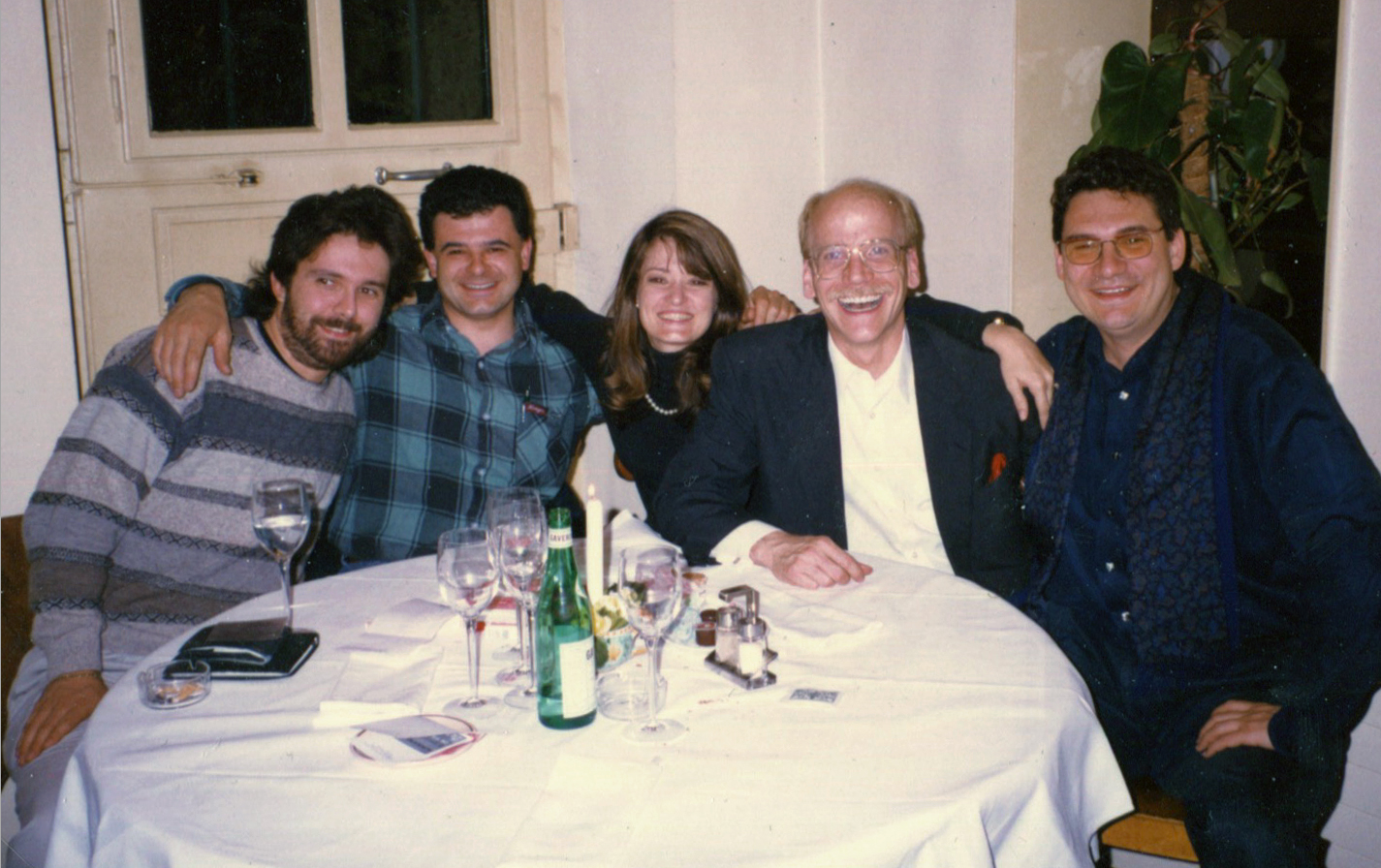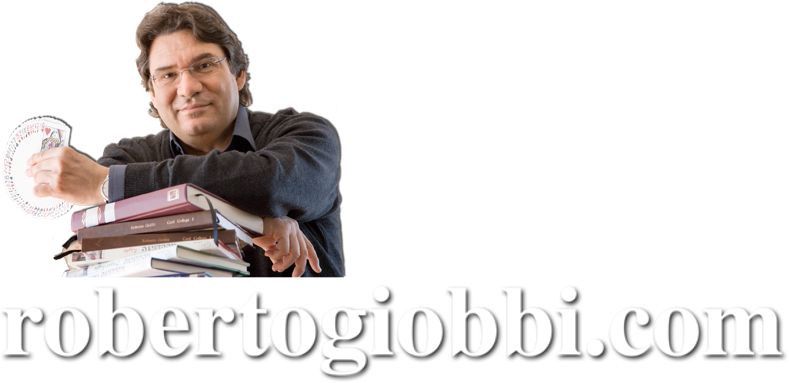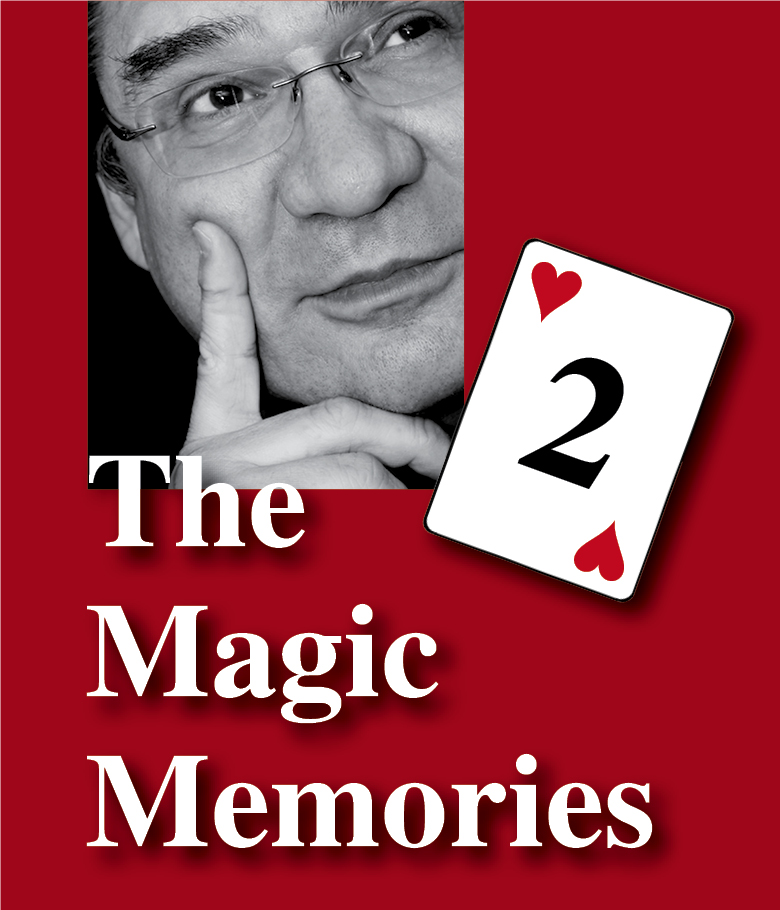
Hello everyone!
Today’s topics are: Thoughts on signing a card; If you like I can write you a postcard
These are The Magic Memories 88, gone online Sunday, September 4th, 2022, at 0:07h sharp.
To Sign or Not to Sign a Card
Each time we meet, my dear friend Claudio Viotto asks me some interesting questions. Here is one that might find your favor, too: “Have you ever discussed the question of why to sign a card (or not), and how to do it?” Like every seemingly easy question, beneath this outer simplicity hides great internal complexity, to paraphrase Miguel de Unamuno.

To Label or Not to Label
I remember when I started out in magic, with little funds and when good decks of cards still were quite expensive here In Switzerland, I had the obvious thought of using some kind of self-adhesive label which could be signed and then stuck on the face of the cards. After the performance the label could be removed, and the precious deck was saved.
Generally speaking, I think that this is not a good idea, for at least two reasons. First (dramatic construction), it is more laborious and takes more time. Second (psychological construction), some spectators will suspect that the label can be removed and placed on another similar card, even if this is not true, for we know that the only “truth” is our “subjective reality”, and that’s all that counts. (Briefly: homo sapiens is not interested in what is true, only in what he or she thinks is true – two different things, and one of the important messages of the Arts in general, and the Art of Magic in particular.)… So, unless you come up with an especially clever presentational ploy that coherently justifies the use of a label, don’t.
Sign, or What?
Another problem is what to write on the card. Does it need to be a signature? In my writings I have offered several alternatives, such as writing the date and the exact time at the moment of signature. This idea alone is worth exploring, as it literally imposes itself as a presentational plot…
And here is an idea that I found in my own Secret Twitter:
“Instead of having an object signed (card, coin etc.) ask the spectator to think of a “secret number”, from 3 to 6 digits, like a PIN Code, and to then write it on the object.”
This is a great opportunity to open a new note in your “Magic Notebook”, maybe under the heading “Signing a Card, Coin etc.”, and there note all ideas you can come up with on the subject. You can start the note by copying and pasting this article – don’t forget to write. “From Roberto Giobbi’s The Magic Memories 88 – 4th SEP 2022″ 🙂
BTW: The spectator’s (first) name on the card can also become part of a trick, e.g., in an Ambitious Card routine. Assume the lady assistant’s name is VERA and she has signed the face of the card with that name. In one of the last phases of the routine bring the ambitious card fourth from the top (corresponding to the number of letters in the name). Snap your fingers and show that the card is… not on the top. “Oh, we have to call the card. What is the name of the card?” They will usually call out the Five of Hearts, or whatever the ambitious card is, whereupon you reply, “No, no, the card’s name is VERA.” This will produce a smile (better than a laugh, because a smile is an “intelligent laugh”). Spell VERA, and then reveal the ambitious card on the last letter. This is even better if the name is a long one, like MARIA-MADDALENA…
Back and Front
And do you sign on the face or on the back?
Although it is a standard joke to say, “Please sign the card – not on the back, on the face…”, there are some tricks that require the exact contrary, and some very good pieces sign the card on both sides. Obviously, there is room for some engaging presentations, such as when a couple writes their first name each on one side…
Make a list of the ten best tricks you know that use a signed card – nice exercise 🙂
The Pen is Mightier Than the Sword
Yet another question is what writing tool to use to sign the card. Obviously, any type of permanent marker will do. Meanwhile, as far as I know, Sharpie has conquered the world-market and is available even in the most remote locations of this planet.

I might be a bit of an exception here, as I’m still using a fountain pen to write. I gave myself a Montblanc Solitaire as a gift for having completed Card College 1&2 (in German) in 1992, and every since I write a postcard to someone almost every day.
So, when it comes to having a card signed, I like to use a writing tool that looks nice. After years of search I found a green Edding that looked elegant enough, but meanwhile we have “sherpa”, a really nice looking pen that accepts most Sharpies.
To carry the “sherpa” together with a green and a black sharpie, I use a three-partition pencil.

Color Change
Next question is what color to use. It was Carlhorst Meyer from Nuremberg, one of my early mentors, who suggested to use a green marker since it could be seen equally well on a black and a red card, and it even shows off better on a court card.
When I put this information in Grosse Kartenschule (Card College) in 1992, I never imagined that it would be such an influential idea: Suddenly everyone was signing their cards with a green-tipped pen!
I vividly remember how they asked me to sit in the jury of a German national magic convention, and several contestants had their card signed with a green pen. When the president of the jury asked another jury member why they all used green instead of black, he answered: “Because it’s in Grosse Kartenschule!” That’s when I realized that those book I had written were much more influential than I ever thought.
Sign it, Really?
I’ve left the most important question to semi-last: Do we really need to have the card(s) signed? Always? When is it completely unnecessary? Great question!
First, there is a communicative aspect: If a spectator is asked to sign a card, not only does he or she personally get involved, but also the rest of the audience, because, as always, when only one member of the audience is asked to assist, you really are speaking to the entire audience through this one spectator, it becomes sort of a pars pro toto strategy.
Furthermore, the act of signing confers an extra portion of importance to the proceedings and becomes therefore a desirable element of the dramatic construction.
Finally, a signed card lends itself to be given away to the assisting spectator – see my way of doing it, based on an idea by Vanni Bossi, in Secret Agenda p. 48 (to any performer this is worth the proverbial price of the book). This is not just a marketing trick, as many would see it, but much more important a possibility for the spectator the relive the experience of wonder and to tell it to someone else.
However, in plenty of situations signing a card is unnecessary, even undesirable. For once, on stage carefully consider whether it is really necessary to have a card signed, for on stage seconds are like minutes, whereas it is a completely different thing to do so at the table, especially in informal situations, where a moment of relaxation is most welcome. Not so on stage, where, as a rule that might have its exceptions, you want to keep the pacing up.
Have a look at the tricks in Stand-up Card Magic: Although cards are selected, in almost none of them is a signature (or whatever) required. This is because I designed the psychological construction of the tricks in such a way that the use of a duplicate card is excluded by the dramatic construction.
Take “Stickler” (a title my publisher Stephen Minch created for my “Card Stab”, p. 242, palindromic, the page, not the title…). In this trick it is made crystal clear that there cannot be any duplicate, therefore signing is completely superfluous.
On the other hand, if you perform a trick where the only solution is a duplicate, such as making it appear outside of a window, the card must be signed, or some other strategy applied to explicitly confirm that it is the very same card (even though it might bot be…).
Lines & Bits of Business
That’s of course another note “Signing a Card – Gags, Lines & Bits of Business” to open in your “Magic Notebook”: List all you can find in the archives, literature etc., and all you have come up with in years of performing in front of a real audience, that keeps the ball rolling, shows that you have a sense of humor, and charmingly helps to interact with your audience.
But remember: Whenever you use “lines”, you want to laugh with your spectator not at your spectator. Here are just a couple of lines as an example:
“Please sign the card… write anything you like… maybe your social security number…” This might be better than asking for the classic “phone number” in today’s politically (over-)correct society; at least in Switzerland and in most parts of Europe the social security number is VERY long, and virtually nobody knows it by heart, so asking for it causes spontaneous amusement.
Here is another line I found in my archive: “This is NOT the pen with which Barack Obama signed his marriage certificate – but you, Sir, may sign the card with it.” Change the name and the “certificate” in any way you like…
BTW: A much neglected chapter is Chapter 64 in Card College 5, “A Cardman’s Humor” (includes Cardwomen, of course). A reviewer criticized this chapter, and I really do not understand why – he probably failed to carefully read my short introductory essay on the matter (p. 1385 and 1386)… Sure, humor is personal and situational, but once you are clear about that, “standard lines” can open up doors to new ideas, but as always you’ve got to “use your head”.
Write Me a Postcard
As I was discoursing above on the subject of fountain pens and cards, a business idea occurred to me that could make me a rich man in a short time (hey, just joking!). Seriously, maybe some of you don’t believe that I write nice cards, with precious fountain pens, send them off in envelopes with a real (lovely!) stamp.
So, if you want an autograph (definition of “autograph” in a general sense: something written or made with one’s own hand; also in a stricter sense: a signature, especially that of a celebrity written as a memento for an admirer), send 10 (Dollars, Euros or what have you) to my PayPal address giobbi@bluewin.ch, and I’ll write you a lovely magical postcard from the Taschen Collection. You then only have to wait about 50 years after I’m dead, and can then sell it for maybe $ 20…
Please indicate your address in Paypal in as simple a manner as possible (especially UK & USA), i.e., : name & surname, street & number, ZIP, city name, country – NOTHING ELSE is required; forget districts, counties, provinces etc. – the ZIP and the city name (for USA, Canada plus state abbreviation) identifies it all.

OK, as you’re reading this I’m off to Austria and then Spain, so I’ll miss you, but wish you three great weeks!
All the very best,
Roberto Giobbi
PS: As announced earlier, there will be no Magic Memories for the next two weeks, as I’m attending two consecutive magic conventions. I’ll see you back here on SUN, SEP 25th, inevitably at 0:07 o’clock sharp.


I also use a Sherpa but adding your name is very eloquent! I will now be on the lookout for a pen case too! I have used a silly name generator at holidays…depending on the person’s initials, they get a silly name.
I first read about the importance of having a selection signed from Frank Garcia’s Exclusive Card Secrets back in 1980. He warns the reader that audience members who had a bit too much alcohol might deny it was their card if it was not signed. Garcia warned that a paid professional cannot afford to be wrong when the selection has to be verified at the end of the trick.